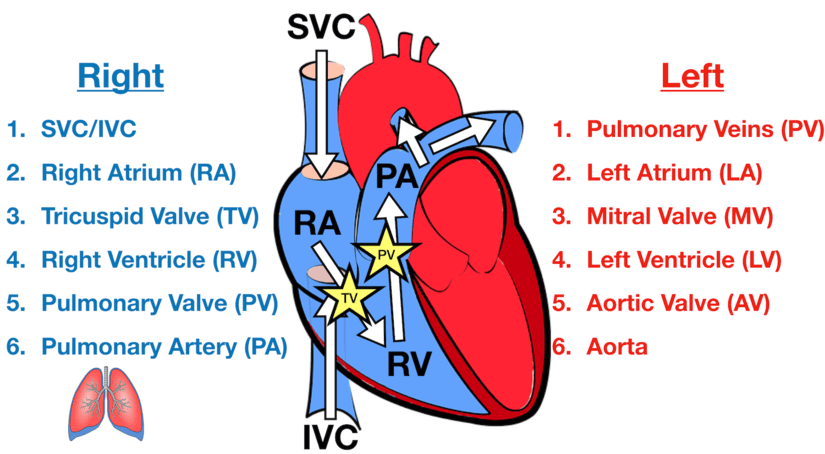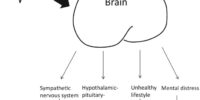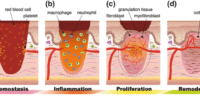Blood Circulation: Understanding The Pathways And Importance

Blood circulation is a vital process that sustains life in animals and humans. It is responsible for delivering oxygen and nutrients to various organs and tissues, as well as removing waste products. Understanding the pathways and importance of blood circulation is crucial for maintaining overall health and preventing diseases.
The circulatory system is a complex network of blood vessels, including the heart, arteries, veins, and capillaries. This system works together to ensure that blood flows smoothly through the body, providing essential nutrients and oxygen to cells and organs.
This article will discuss the basics of the circulatory system, the role of each component in blood circulation, and factors that affect blood flow. Additionally, it will provide tips on how to maintain healthy blood circulation and prevent circulatory-related diseases.
Key Takeaways
- Blood circulation is essential for sustaining life by delivering oxygen and nutrients and removing waste products.
- The circulatory system is a complex network of blood vessels, and any disruption in blood circulation can have severe consequences for health and wellbeing.
- Physiological and environmental factors can impact blood flow efficiency, with high blood pressure being a common factor affecting circulation.
- Regular physical activity, a healthy diet, and stress management are essential for maintaining healthy blood circulation and preventing circulatory-related diseases.
The Basics of the Circulatory System
The understanding of the basics of the circulatory system is crucial in comprehending the pathways and importance of blood circulation, thereby evoking a sense of awe and wonder at the complexity of the human body.
The circulatory system consists of the heart, blood vessels, and blood.
The heart pumps blood, which carries oxygen and nutrients, to the rest of the body, and then returns deoxygenated blood back to the heart to be re-oxygenated in the lungs.
The blood vessels in the body can be divided into three types: arteries, veins, and capillaries.
Arteries carry oxygenated blood away from the heart, veins carry deoxygenated blood back to the heart, and capillaries are tiny vessels that connect arteries and veins.
Blood carries nutrients, such as glucose, amino acids, and fatty acids, to cells in the body, and removes waste products, such as carbon dioxide and urea.
Understanding the basics of the circulatory system is essential to understanding how blood circulates through the body and how it supports the body’s vital functions.
The Heart: The Engine of Blood Circulation
Cardiac muscle contraction, initiated by electrical impulses from the sinoatrial node, propels blood through the four chambers of the heart.
The right atrium receives deoxygenated blood from the body and sends it to the right ventricle, which then pumps it to the lungs for oxygenation.
The left atrium receives oxygenated blood from the lungs and sends it to the left ventricle, which then pumps it to the rest of the body.
The heart’s pumping action is crucial for maintaining blood circulation, which is essential for supplying oxygen and nutrients to all cells and removing waste products.
To better understand the importance of the heart’s role in blood circulation, here are four key points to consider:
- The heart beats approximately 100,000 times per day, pumping around 2,000 gallons of blood.
- The heart’s pumping action creates a pressure gradient that drives blood flow through the blood vessels.
- Blood circulation is essential for maintaining homeostasis in the body, regulating body temperature, and delivering hormones and immune cells.
- Any disruption in blood circulation, such as a heart attack or stroke, can have severe consequences for health and wellbeing.
The Arteries: Delivering Oxygen and Nutrients
Arteries play a vital role in the delivery of oxygen and nutrients to tissues throughout the body. These blood vessels carry oxygenated blood away from the heart and towards the organs, muscles, and tissues that require it. The structure of arteries is designed to withstand the high pressure of blood flow, with thick muscular walls and elastic fibers that allow them to expand and contract in response to changes in blood volume and pressure.
Each artery is made up of three layers: the tunica intima, tunica media, and tunica adventitia. The tunica intima is the innermost layer, composed of endothelial cells that line the artery and provide a smooth surface for blood flow.
The tunica media is the middle layer, consisting of smooth muscle and elastic tissue that allows the artery to expand and contract. The tunica adventitia is the outermost layer, composed of connective tissue that provides support and protection to the artery.
Together, these layers enable arteries to transport blood efficiently and effectively throughout the body, ensuring that organs and tissues receive the oxygen and nutrients they need to function properly.
The Veins: Carrying Waste Products
Veins are an essential component of the circulatory system, responsible for carrying waste products away from organs and tissues and back towards the heart. Unlike arteries, veins have thinner walls and less muscular tissue. They also have one-way valves that prevent blood from flowing backwards. These valves open and close in response to pressure changes in the circulatory system, ensuring that blood only flows in one direction.
The three main types of veins are superficial veins, deep veins, and perforator veins. Superficial veins are located close to the skin’s surface and are responsible for draining blood from the skin and subcutaneous tissues. Deep veins are located deep within the body and are responsible for draining blood from the muscles and organs. Perforator veins connect the superficial and deep veins together and help to regulate blood flow.
Understanding the different types of veins and their functions is crucial to understanding the circulatory system’s overall function.
The Capillaries: Connecting Arteries and Veins
The smallest blood vessels in the body, known as capillaries, are responsible for connecting the arterial and venous pathways of the circulatory system. These tiny vessels are only one cell thick and are found in almost every tissue in the body.
Capillaries are responsible for the exchange of gases, nutrients, and waste products between the blood and the surrounding tissues. Oxygen and nutrients pass from the capillaries into the tissues, while waste products and carbon dioxide move from the tissues into the capillaries, where they are carried away to be eliminated from the body.
Capillaries are so small that red blood cells must pass through them in single file. This allows for the efficient exchange of oxygen and nutrients, as well as the removal of waste products. Capillaries also play a role in regulating blood flow to different parts of the body.
When tissues require more oxygen and nutrients, the capillaries in those areas will dilate, allowing for increased blood flow. Conversely, when tissues require less blood flow, the capillaries will constrict, redirecting blood to other areas of the body.
Overall, the capillaries are a crucial component of the circulatory system, ensuring that nutrients and oxygen are delivered to the body’s tissues while waste products are efficiently removed.
The Lymphatic System: Supporting Blood Circulation
The capillaries play a crucial role in connecting arteries and veins, facilitating the exchange of oxygen, nutrients, and waste products between the blood and the surrounding tissues. However, blood circulation is not only limited to the cardiovascular system, but it also involves the lymphatic system, which plays a significant role in supporting blood circulation.
The lymphatic system is a network of vessels, nodes, and organs that work together to maintain fluid balance, remove waste products, and fight infections. The lymphatic vessels are similar to veins but are thinner and have more valves, allowing them to transport lymphatic fluid, which is a clear fluid containing white blood cells, proteins, and cellular debris. The lymphatic vessels drain lymphatic fluid from the tissues and transport it to lymph nodes, where it is filtered and purified before returning to the blood circulation. The following table summarizes the main differences between the cardiovascular and lymphatic systems.
| Cardiovascular System | Lymphatic System |
|---|---|
| Consists of heart, arteries, veins, and capillaries | Consists of lymphatic vessels, nodes, and organs |
| Transports blood throughout the body | Transports lymphatic fluid and immune cells |
| Delivers oxygen and nutrients to the tissues | Maintains fluid balance and removes waste products |
| Removes carbon dioxide and other waste products | Fights infections and diseases |
While the cardiovascular system is responsible for delivering oxygen and nutrients to the tissues and removing waste products, the lymphatic system supports blood circulation by maintaining fluid balance and fighting infections. Understanding the pathways and importance of both systems is crucial for maintaining a healthy body and preventing diseases.
Factors Affecting Blood Circulation
Various physiological and environmental factors can impact the efficiency of blood flow throughout the body.
One of the most common factors that affect blood circulation is high blood pressure. When the blood pressure is too high, it can damage the arterial walls, causing them to become stiff and narrow. This, in turn, can restrict the flow of blood and oxygen to the organs and tissues, leading to various health complications such as heart disease, stroke, and kidney failure.
Another factor that affects blood circulation is physical inactivity. When a person is inactive, their muscles do not contract as frequently, causing the blood to pool in the veins. This pooling can cause the veins to become enlarged and twisted, leading to varicose veins.
Physical inactivity can also lead to the accumulation of fatty deposits in the arteries, which can cause them to narrow and stiffen, further restricting blood flow. Therefore, regular physical activity is essential for maintaining healthy blood circulation and preventing various health complications.
Maintaining Healthy Blood Circulation
Blood circulation is a vital process that is necessary for the proper functioning of the human body. In the previous subtopic, we discussed how various factors can affect blood circulation, such as smoking, high blood pressure, and high cholesterol levels.
Now, let’s delve deeper into how we can maintain healthy blood circulation.
Maintaining healthy blood circulation is essential for overall health and well-being. Here are three ways to improve blood circulation:
- Exercise regularly: Regular exercise helps to improve blood circulation by strengthening the heart and blood vessels. It also helps to reduce the risk of developing conditions that can affect blood flow, such as obesity and diabetes.
- Eat a healthy diet: Eating a diet that is rich in fruits, vegetables, whole grains, and lean proteins can help to improve blood circulation. These foods contain essential nutrients that support healthy blood vessels and reduce the risk of developing conditions that can affect blood flow.
- Manage stress: Chronic stress can have a negative impact on blood circulation. Finding ways to manage stress, such as practicing meditation or yoga, can help to improve blood flow and reduce the risk of developing conditions that can affect blood circulation.
Conclusion
In conclusion, understanding the pathways and importance of blood circulation is integral to maintaining good health.
The circulatory system is a complex network of organs and vessels that work together to ensure the delivery of oxygen and nutrients to every part of the body while removing waste products.
The heart functions as the engine of this system, pumping blood through the arteries, veins, and capillaries.
The lymphatic system also plays a crucial role in supporting circulation by removing excess fluid and waste from the tissues.
Several factors can affect blood circulation, including lifestyle choices like diet and exercise, as well as underlying medical conditions such as diabetes and hypertension.
It is essential to maintain healthy circulation to prevent serious health complications like heart attacks, strokes, and peripheral artery disease.
By adopting a healthy lifestyle and seeking medical treatment when necessary, individuals can support their circulation and promote overall well-being.
Ultimately, understanding the pathways and importance of blood circulation is crucial to living a long, healthy life.









